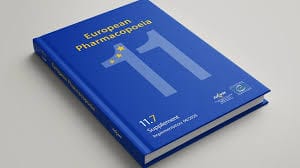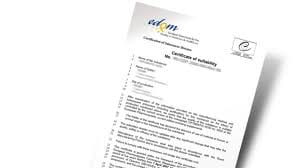Introduction of DMF/CEP :The Importance of Regulatory Submissions
Introduction to DMF/CEP
Introduction to DMF/CEP A Drug Master File (DMF) and Certificate of Suitability (CEP) are crucial documents in the pharmaceutical industry, ensuring the quality and safety of drug substances. The DMF is a confidential filing with the FDA that provides detailed information about the manufacturing, processing, and packaging of a drug component. In contrast, a CEP is issued by the European Directorate for the Quality of Medicines & HealthCare (EDQM) to confirm that a substance meets the requirements of the European Pharmacopoeia.
Need for Regulatory Submission
Regulatory submissions of DMFs and CEPs are essential for several reasons:
- Quality Assurance: These documents provide regulatory authorities with comprehensive data that demonstrates the quality of the drug substance, ensuring that it meets established standards.
- Safety and Efficacy: Submissions help verify that the drug is safe for patient use and effective for its intended purpose, which is crucial for gaining market approval.
- Facilitating Approval Processes: Regulatory submissions streamline the review process by offering all necessary information in a structured format, expediting approvals for pharmaceutical companies.
- Market Access: For companies aiming to market their products internationally, having a DMF or CEP is often a prerequisite for compliance with local regulations, thereby aiding in global market entry.
- Protecting Intellectual Property: A DMF allows manufacturers to protect sensitive manufacturing information while still providing regulators with the necessary details for assessment.
Overview of Drug Master File (DMF)
A Drug Master File (DMF) is a crucial component of the documentation submitted to regulatory authorities such as the US Food and Drug Administration (FDA), the European Medicines Agency (EMA), and Japan’s Ministry of Health, Labor and Welfare (MHLW).
What is a Drug Master File (DMF)?
A DMF is a voluntary, confidential submission of detailed information to the FDA that outlines the facilities, processes, and materials involved in the development, processing, packaging, and storage of drug products.
Typically prepared by pharmaceutical companies, this document is submitted to the relevant regulatory agency in the target market. It encompasses comprehensive details about various elements, including Active Pharmaceutical Ingredients (APIs), drug substances, excipients, and packaging materials.
Furthermore, DMFs enable holders to grant authority to sponsors or applicants supporting a submission to the FDA without the need to disclose sensitive information directly to them. This aspect of DMFs is particularly beneficial for maintaining confidentiality while facilitating regulatory processes.
Overview of DMF in Regulatory Submissions
A Drug Master File (DMF) contains comprehensive details about an Active Pharmaceutical Ingredient (API) or a Finished Drug Substance. The terminology varies by region; in the United States, it is called a US Drug Master File (US-DMF), while in Europe, it may be referred to as a European Drug Master File (EDMF) or an Active Substance Master File (ASMF).
DMFs typically encompass the Chemistry, Manufacturing, and Controls (CMC) aspects of a drug component, such as the drug substance, excipients, or packaging materials. Additionally, a DMF can include information related to drug product specifics or non-CMC aspects, such as facility details and toxicological data.
DMFs play a crucial role in supporting New Drug Applications (NDAs), Abbreviated New Drug Applications (ANDAs), and Investigational New Drug applications (INDs), which can lead to substantial financial returns for pharmaceutical companies, often involving investments ranging from hundreds of thousands to millions of dollars in research and development.
1.1 Components of DMF
In contrast to the US Drug Master File, the scientific data in the European Drug Master File (EDMF) or Active Substance Master File (ASMF) is organized into two distinct sections according to European filing regulations.
- Restricted Part (Closed Part)
This section contains confidential information submitted solely to the regulatory authority. It includes:
- Details about the manufacturer(s) and manufacturing site
- A comprehensive description of the manufacturing process and controls
- Control measures for materials (including starting materials, reagents, solvents, and other utilized materials)
- Management of critical steps and intermediates
- Process validation and evaluation
- Development of the manufacturing process
- Applicant’s Part (Open Part)
This section consists of non-confidential information provided to the applicant and also submitted to the authority as part of DMF services. It includes:
- General information
- Characterization details
- Control measures for the API
- Reference standards or materials
- Container closure system specifics
- Stability data
1.2 DMF Format
DMFs can be submitted in accordance with the format outlined in the “Guidance for Industry M4Q: the CTD – Quality.” The Common Technical Document (CTD) serves as a standardized set of specifications for application dossiers used in the registration of medicines across Europe, Japan, and the United States. This framework was developed collaboratively by the European Medicines Agency (EMA), the U.S. Food and Drug Administration (FDA), and Japan’s Ministry of Health, Labour and Welfare.
Types of DMFs (FDA)
- Type I: Manufacturing Site, Facilities, Operating Procedures, and Personnel (no longer applicable)
- Type II: Drug Substance, Drug Substance Intermediate, and Materials Used in Their Preparation, or Drug Product
- Type III: Packaging Material
- Type IV: Excipients, Colorants, Flavors, Essences, or Materials Used in Their Preparation
- Type V: FDA-Accepted Reference Information
Status of the DMF Database According to the US FDA
The status of a Drug Master File (DMF) as per the US FDA is categorized as follows:
- “A” = Active: The DMF is currently open and accepting submissions.
- “C” = Complete: The DMF submission is finalized.
- “I” = Inactive: The DMF has been closed either by the holder or the FDA.
- “P” = Pending: The DMF is under review.
- “N” = Not assigned a number: The DMF has not yet been assigned a unique identifier.
DMF Formats
Different countries have distinct DMF formats and submission requirements. For instance, the US FDA requires two copies of each type of DMF in the CTD format; however, it does not require the CTD modules to be separated. Instead, a single continuous document in the CTD format is necessary. Unlike the European DMF format, the US does not differentiate between an “Applicant’s Part” and a “Restricted Part.”
It is recommended to submit DMFs in electronic format, as a mixed submission of paper and electronic formats may lead to review delays. All electronic submissions must include a pre-assigned number, although this number is not needed when converting data from paper to electronic format. A six-digit number (e.g., 2345) should be submitted as 002345, with “0000” used as the sequence number for the first electronic submission.
Once a DMF has been submitted electronically, all subsequent submissions should also be in electronic format, as electronic files cannot be converted back to paper. Ukraine SMDC regulatory
Benefits of DMF Services
- Ensures the confidentiality of proprietary information
- Provides a competitive advantage
- Allows multiple applicants to reference the information
- Enhances the overall value of the product and company
- Is regarded as more reliable in terms of quality and regulatory compliance
- Builds customer confidence
- Boosts sales globally
- Facilitates entry into the high-barrier US market
What is CEP?
The Certificate of Suitability (CEP) refers to the Certificate of Suitability to the monographs of the European Pharmacopoeia. Issued by the Certification of Substances Division of the European Directorate for the Quality of Medicines (EDQM), this certificate was established in 1994. It is granted when a drug product manufacturer demonstrates compliance with the quality standards set forth in the relevant European Pharmacopoeia monographs.


Benefits of the CEP
- Ensures confidentiality of submitted data
- Streamlines evaluation by the EDQM
- Provides recognition across all Member States of the European Pharmacopoeia Convention, covering 36 countries
- Facilitates smoother applications for marketing authorization (MAA) for medicinal products in those nations
- Simplifies the approval process compared to the Active Substance Master File (ASMF) or European Drug Master File (EDMF)
Who Needs a CEP?
Manufacturers or suppliers seeking marketing authorization may require a Certificate of Suitability (CEP) for the following:
- Active Ingredients or Excipients: This includes both natural and synthetic substances formulated alongside the active ingredient in medications, ensuring the purity and microbiological quality of these products.


Introduction to DMF and CEP - Substances with Reduced TSE Risk: Manufacturers must demonstrate that the risk of Transmissible Spongiform Encephalopathy (TSE) has been minimized, in accordance with relevant general monographs.
- Herbal Ingredients: Herbal substances used in the production of pharmaceutical products must be evaluated for compliance with the appropriate monographs to ensure their suitability and quality.

